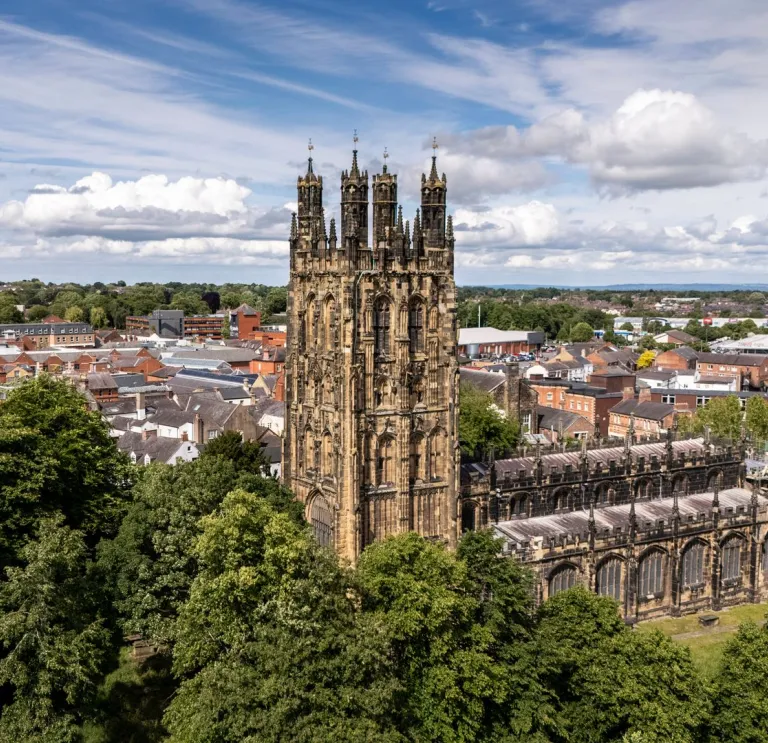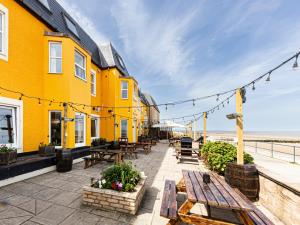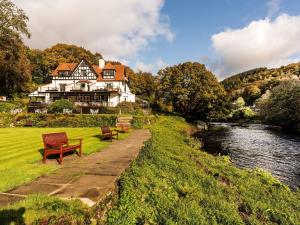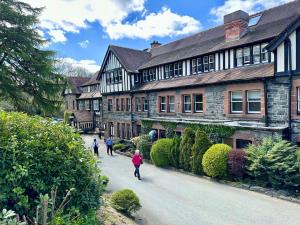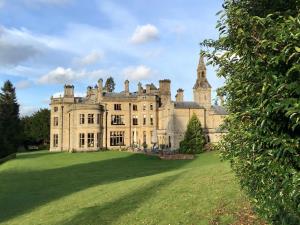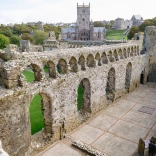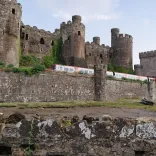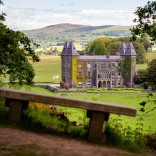These suggestions are generally suitable for FITs and groups but we have noted if any are not applicable. We have also included coach parking information where relevant.
Wrexham received city status in honour of the Queen’s Platinum Jubilee in 2022. North American actors, Ryan Reynolds and Rob McElhenny, have become ambassadors for Wrexham since acquiring Wrexham AFC. The City of Wrexham has become a popular visitor destination following their documentary ‘Welcome to Wrexham’ streaming on Disney+ and Hulu.
Visitors can enjoy a drink at The Turf Pub that features in the programme and visit the Wrexham AFC Club Shop at the STōK Cae Ras Stadium, the oldest international football ground still in use. The club has also opened their main club shop in the Eagles Meadow Shopping Centre in the city centre. The Bank, a restaurant that has been working with Wrexham Lager, has put together a ‘tasting experience’ that pairs three Wrexham Lagers with a Truffle Mushroom Tart, Welsh pork sausage roll and Peruvian chicken tacos. You can book this experience directly at The Bank. Visitors can also visit the Wrexham Lager shop in the city centre Monday to Friday between 9am and 5pm - did you know that it was said to be the only lager served on The Titanic!
Here's a selection of the city and region's highlights, some of which have featured in the series too.
The Football Association of Wales was founded in Wrexham in 1876 and a Football Museum for Wales is due to open here in 2026. The development of the new museum will see the current Wrexham County Borough Museum on Regent Street refurbished and transformed into a ‘museum of two halves’. It is a good place to discover the history of the area which is housed in one of Wrexham’s landmark buildings, built as a barracks for the Royal Denbighshire Militia and also home to the Denbighshire Constabulary and local courts. There is a coffee bar and bistro on-site.
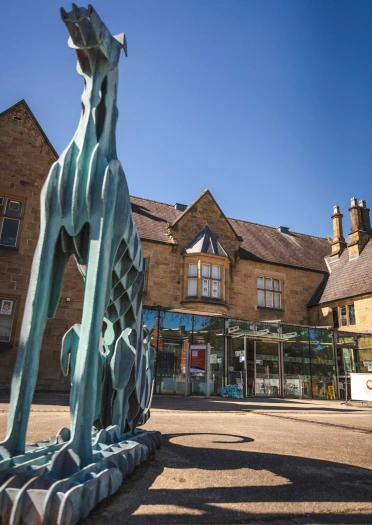
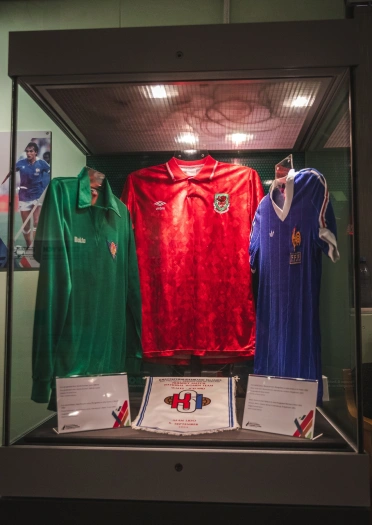
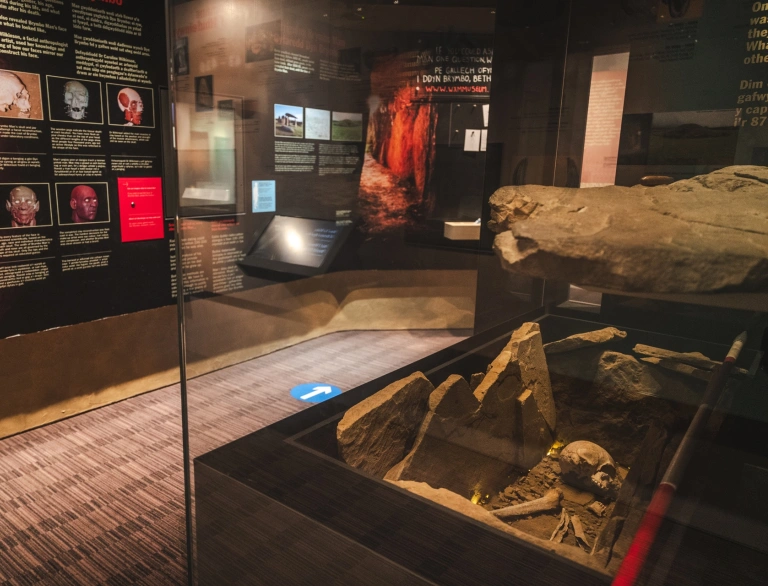
Tŷ Pawb, once an indoor market, is now a lively community space and was one of the finalists for the Art Fund Museum of the Year 2022. It incorporates an art gallery, a market showcasing local businesses and a food hall. There are more interesting shops and galleries in the Independent Quarter and the Eagles Meadow shopping centre for high street brands. See more information in our shopping highlights fact sheet.
The St Giles' Parish Church is the largest medieval church in Wales, and its bell tower dominates the skyline of Wrexham, another of the seven wonders of Wales. Your clients can climb up to the church roof. Advance booking is essential.
Discover Wrexham's heritage with the Wrexham Heritage Trail.
The Taste of Wrexham Food Tour by Walking Food Tours UK provides an unique and immersive experience for culinary enthusiasts. Your clients will visit five independent venues, where they can taste local cuisine and beverages while gaining insight into the rich culture and history of Wrexham.
Pure Wales is now operating ‘The Wrexham Taster’, a half-day tour designed for small groups and independent travellers. The tour includes stops at The Bank, St Giles Cathedral, Vault 33, Wrexham Lager Brewery and Jones Café. They also offer an 8hr Driver Guided Tour of North Wales departing from Wrexham.
Coach parking in Wrexham is available at Eagles Meadow Shopping Centre. Advance booking is essential. Drop-off and pick-up point on High Street in centre of main shopping area
Your clients may want to visit Plassey Retail Village, with over 20 independent retail outlets, licenced restaurants, golf course and cycling and walking trails. It is 4.3 miles (6.9 km) from the city centre. Free coach parking is available here - book your slot in advance.
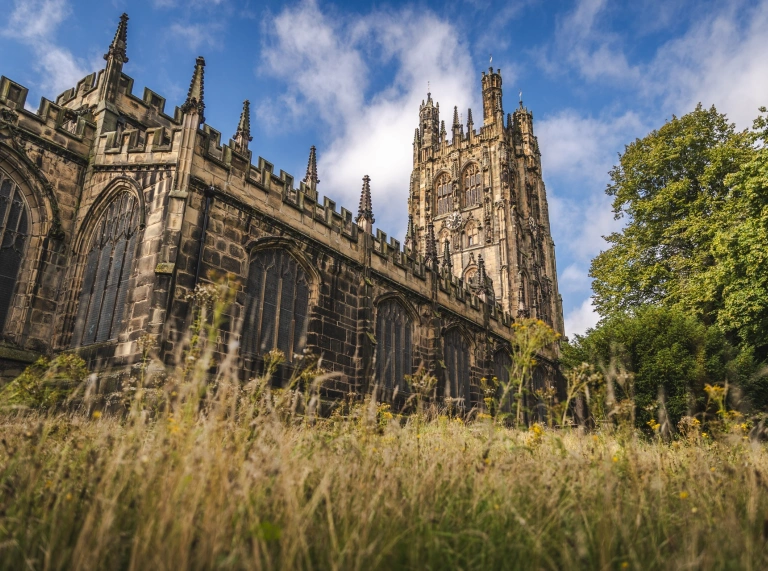
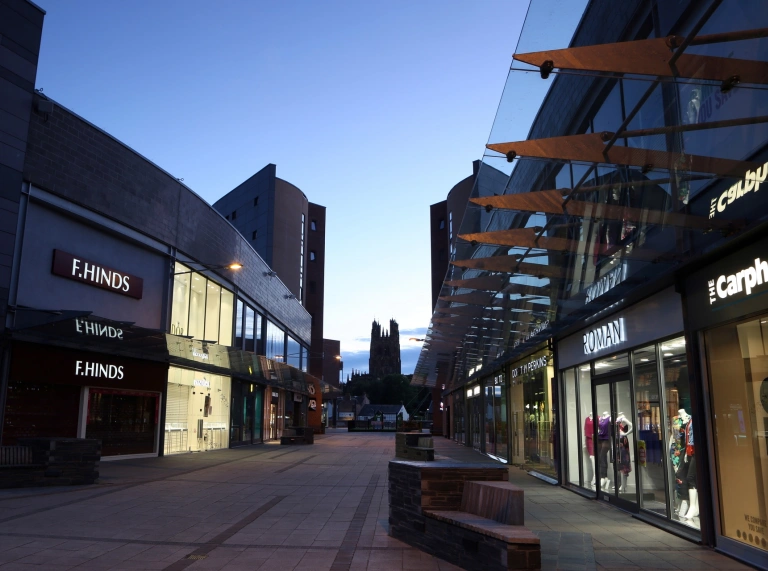
A good refreshment and toilet stop for your clients travelling to/from and through the borough of Wrexham is Caffi Cyfle at Alyn Waters Country Park, a 400-acre Green Flag Award accredited site. This is also suitable for coaches as they can tailor packages for your needs, whether that’s providing refreshments to be taken away and consumed on the coach, or the use of their large conference room situated behind the café. It can also offer an opportunity for your clients to take a walk as there are a variety of woodland, grassland and riverside walks throughout the park.
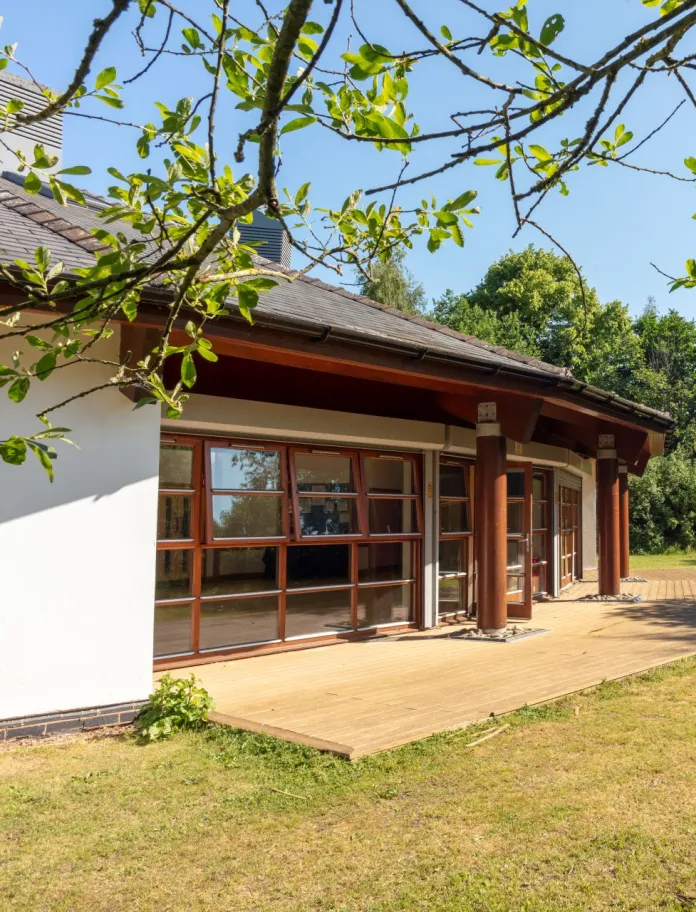
Llangollen
Llangollen is a small town situated in North East Wales, 25 miles (40 km) from Chester by the River Dee and the Llangollen Canal. The 14th century Llangollen Bridge links the town’s many shops, cafes, bars and attractions. Llangollen has many annual events, including its Food Festival, the Llangollen International Musical Eisteddfod and the Llangollen Fringe Festival. Coach parking is available at Market Street car park.
The Llangollen Museum in the town centre is run by the locals, housing 1500 artefacts and 7000 documents. The museum has a significant genealogy resource. Llangollen Motor Museum is open for the first week of each month. Groups of 10 or more can arrange a visit throughout the year by contacting the museum.


Llangollen Wharf is on the canal above the town. Horse Drawn Boat Trips and narrow boat trips to the nearby World Heritage Site, Pontcysyllte Aqueduct, operate from here. Alternatively, there are five daily 45min boat trips across the Aqueduct with Anglo Welsh Waterways Holidays.
Pontcysyllte Aqueduct is a UNESCO World Heritage Site located 4 miles (7km) from Llangollen and along the Llangollen Canal. Wimbourne gate car / coach park is the official coach parking for Pontcysyllte Aqueduct. Coaches can drop off visitors in the slightly closer main car park that is on the same road, walking from this car park along the canal towpath is a simple flat 5min walk to the aqueduct.
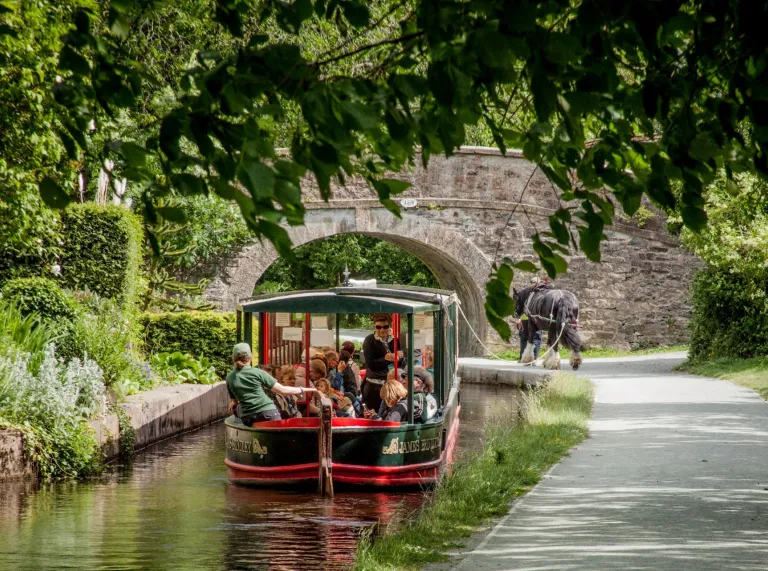
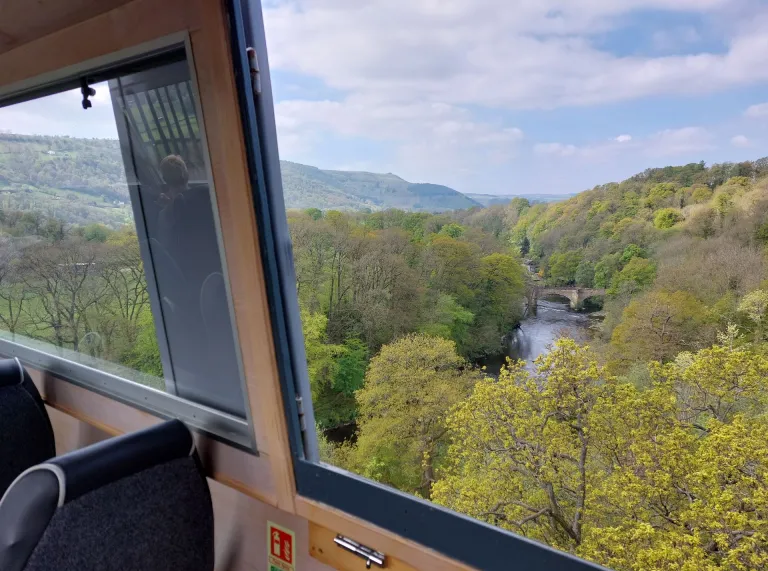
Llangollen Railway operates a service between Llangollen and Carrog using steam and diesel heritage trains on a full gauge track. A return journey takes approximately 1hr 30min. There is a Café bar and gift shop at Llangollen Station and a tea room at Carrog Station. Group discount offered for 15 or more passengers. Discount increases if more than 35. Free admission for coach driver or tour guide. There are no parking facilities.
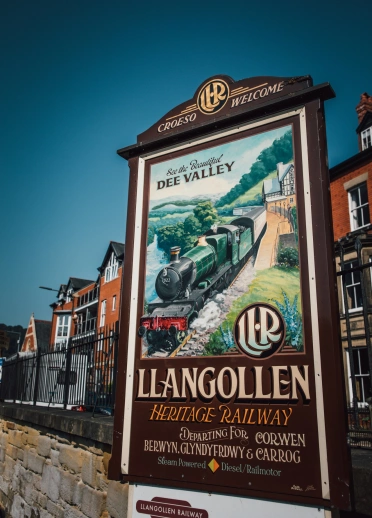
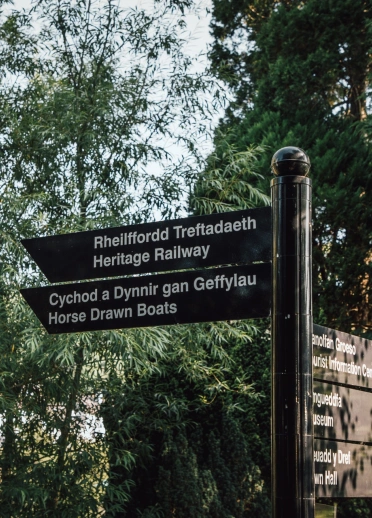
A short 1 mile (1.6km) walk from the town centre is Plas Newydd, home of the Ladies of Llangollen. They were two 18th century celebrities, who created gardens and a gothic-styled house. Talks and tea rooms are available on-site. Coaches may drop off their clients and park in the nearby Market Street.
The Royal International Pavilion, just north of the town, is the home of the Llangollen International Musical Eisteddfod. The celebrated cultural event was founded in 1947 to support peace and friendship following WWII. Held each July, it attracts performers from around the world in singing and dancing competitions.
Llangollen is overlooked by the ruins of 13th Century Castell Dinas Brân and legend states the location of the holy grail. A strenuous walk climbs almost 300 metres (1,000 ft) to the site. Walkers should allow a half day and wear suitable walking equipment. The views of the River Dee and surrounding hills are worth the climb.
Bearded Men Adventures offer full and half day outdoor adventure activities such as canoeing; archery and axe throwing; river tubing; white water rafting and climbing and abseiling in the Llangollen area. They also cover the whole of North Wales and can offer multi-day adventures too.
Ruthin and Corwen
Go via Llangollen and head north along the scenic Horsehoe Pass to Ruthin. The Horseshoe Pass is 416 metres (1367 ft) above sea level, with views of limestone formations creating a mini Grand Canyon. Descend into the Nant y Garth Pass and continue on to the historic market town of Ruthin. Free parking is available at Ruthin Craft Centre with Pick-up and drop-off points at Park Road Car Park. Ruthin has a choice of places to eat, has a selection of independent shops and a contemporary art gallery, Ruthin Craft Centre. Other highlights include the Ruthin Gaol, a museum of crime and punishment and Nantclwyd y Dre, Wales’ oldest surviving timber-framed medieval town house. Note that both attractions are closed during the winter months from October to March. However, groups can arrange a visit during these months by calling +44 (0) 1824 708218.
Next stop at Rhug Estate one of the UK’s leading organic farms. There is a Rhug Farm Walk, a drive-through bison burger bar, cafe and a farm shop. Coach parking is available on request. The cafe can cater for 30-35 people in addition to a take-away service and outdoor seating.
The town of Corwen is great for vintage shopping and Welsh crafts and gifts. There is a statue to Owain Glyndŵr, the last Prince of Wales. Coach parking is available in Green Lane Car Park next to the surgery.
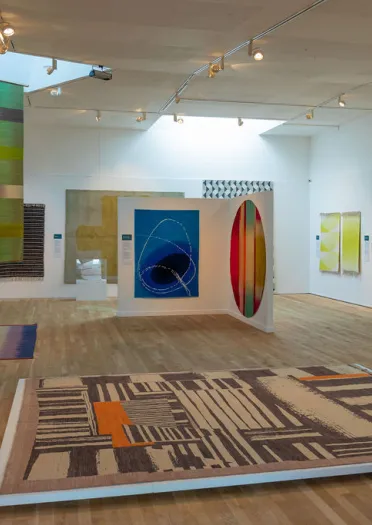
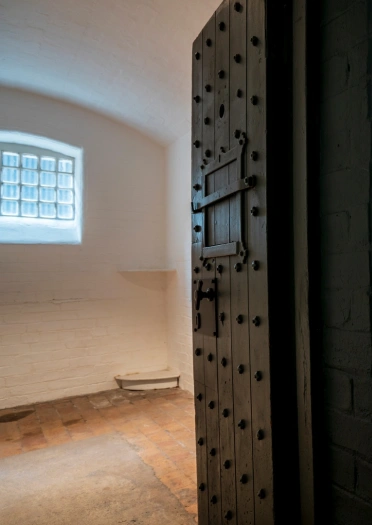
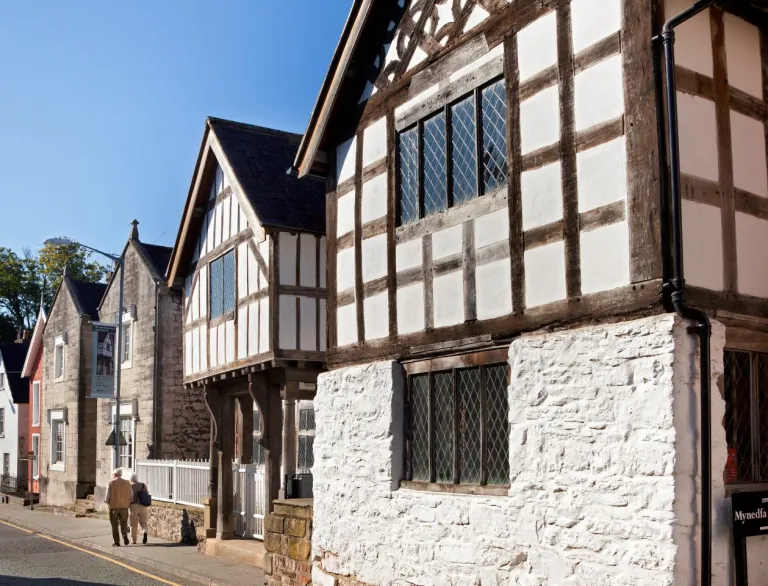
Country and nature
Head south west from Wrexham and continue to Bala for a scenic drive through the mountains. Your clients can walk on the shores of Llyn Tegid, the largest natural lake in Wales or take a 1hr journey on the Bala Lake Railway, alongside the lake. Limited coach parking is available at the railway, contact directly in advance.
Head north to Llanarmon Dyffryn Ceiriog where The Hand at Llanarmon and the The West Arms are located. Short walks around Chirk and the Ceiriog Valley are available. This section is more suitable for FITs and small groups.
Continue south to Lake Vyrnwy. Bike hire is available and there are a number of walking trails around the lake. The Rhiwargor waterfall is located at the northern end of the lake accessible from the Rhiwargor Waterfall car park. Your clients can spot wildlife at the RSPB Nature Reserve, a designated Site of Scientific Interest. There is space for 2 coaches in a big lay-by on the left-hand side just passed the toilets (turn right at the end of the dam, 100 yards on the left). To enquire contact Griffith.Watkins@severntrent.co.uk.


Five miles (8 km) west of Wrexham is Minera Lead Mines and Country Park. The lead mines is a free attraction and provides a captivating look into the industrial history of the picturesque Clywedog Valley. Clients can explore the 53 acre country park and discover the remaining areas of lead processing from the 18th and 19th centuries, including the boiler houses, restored beam engine house, and winding engine. The visitor centre also narrates the site's story.
Return to Wrexham via the scenic Ceiriog Valley.

National Trust properties
Chirk Castle and Gardens is a National Trust property and family home to the Myddelton family, with over 700 years of history. Your clients can visit the rooms, the tower and the dungeon with a collection of treasures to discover. It also has award-winning gardens and walking trails within the 480 acre parkland. There is a café and shop on-site.
Just a 20min drive from Chirk Castle is Erddig, a stately home now also in the care of the National Trust. It reflects the owners’ wealth and the care of their servants, set in gardens.
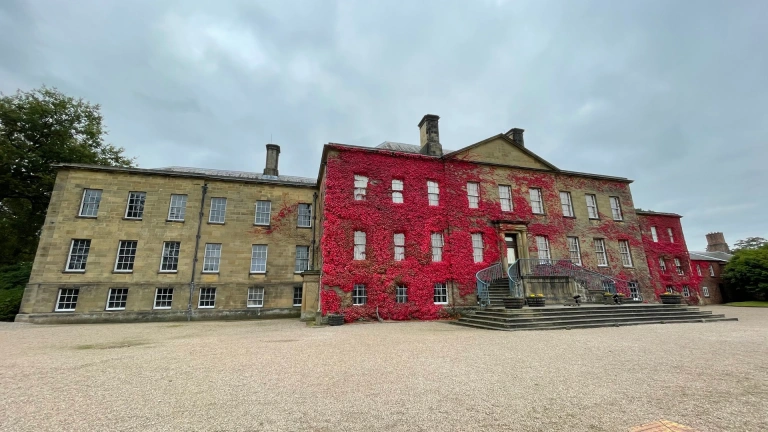
Adventure days out
Mynydd Sleddog Adventures is Wales first and only sleddog activity provider. Clients will be able to experience the thrill of a unique sleddog ride, whilst getting up close and personal with the beautiful dogs. Although it is predominantly available during the autumn and winter season, there are also Husky Hiking Adventures offered during the warmer months. Parking suitable for minibuses only.
Download a copy of This is Wrexham, an essential guide to getting out and about, in and around Wrexham.
A viral Reddit post by two visitors from Arizona, who called their trip to Wrexham ‘an absolute highlight experience,’ has been adapted into a short film to inspire others to explore the region.

